Samsung Galaxy S 5 Review
by Anand Lal Shimpi & Joshua Ho on April 8, 2014 12:00 AM EST- Posted in
- Smartphones
- Samsung
- Mobile
- Galaxy S 5
CPU Performance
The Galaxy S 5 marks the second Snapdragon 801 based device we've reviewed at AnandTech, the first being HTC's M8. I've gone through the Snapdragon 801 in depth already, but we're basically dealing with a reasonable upgrade to Snapdragon 800 on an improved 28nm HPm process. The bulk of the improvements impact GPU and ISP performance, but the SoC is just better overall. GS5 owners are lucky as all versions of the device that use Qualcomm silicon feature the MSM8974AC v3 SKU, which includes four 2.5GHz Krait 400 cores and a 578MHz Adreno 330 GPU.
| Snapdragon 800/801 Breakdown | ||||||||||
| SoC Version | Model | Max CPU Frequency | Max GPU Frequency | ISP | eMMC | DSDA | Memory IF | |||
| MSM8974VV | v2 | S800 | 2.2GHz | 450MHz | 320MHz | 4.5 | N | 800MHz | ||
| MSM8974AA | v2 | S800 | 2.3GHz | 450MHz | 320MHz | 4.5 | N | 800MHz | ||
| MSM8974AB | v2 | S800 | 2.3GHz | 550MHz | 320MHz | 4.5 | N | 933MHz | ||
| MSM8974AA | v3 | S801 | 2.3GHz | 450MHz | 320MHz | 5.0 | Y | 800MHz | ||
| MSM8974AB | v3 | S801 | 2.3GHz | 578MHz | 465MHz | 5.0 | Y | 933MHz | ||
| MSM8974AC | v3 | S801 | 2.5GHz | 578MHz | 465MHz | 5.0 | Y | 933MHz | ||
Although Samsung was the first major OEM to be caught cheating in Android benchmarks, it appears to have completely abandoned the practice with the Galaxy S 5's shipping software. Not only was I unable to find any evidence of the old cheats, I couldn't find any evidence of HTC's new subtle cheating either. The Galaxy S 5 appears to be clean as far as I can tell. Kudos to Samsung on doing the right thing, and I hope all other OEMs take this as a sign to stop the silliness.
For our performance tests I turned to our usual suite of browser and native applications. If there's one obvious takeaway from our CPU tests it's that despite having faster silicon than HTC's M8, the GS5 isn't always faster. I believe this has more to do with thermals than anything else. HTC's metal chassis is able to do a better job of dissipating heat than the GS5's plastic chassis. I don't believe there's a substantial impact on user experience, but it's interesting to note how choice in materials can have a performance impact like this.
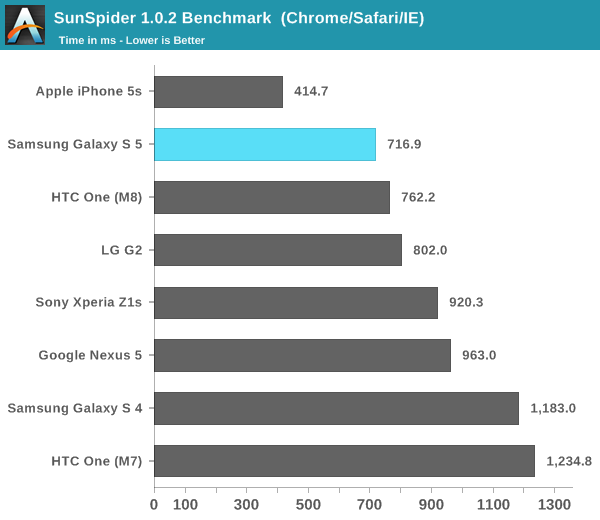
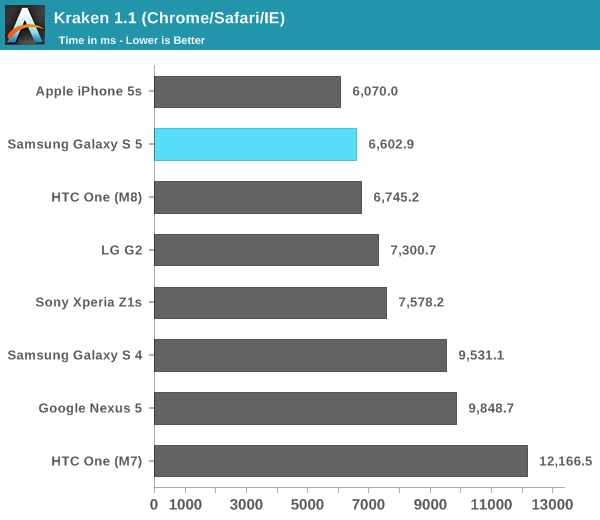
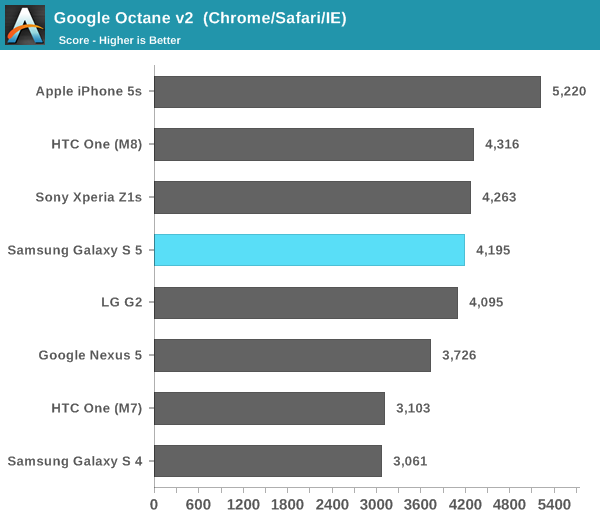
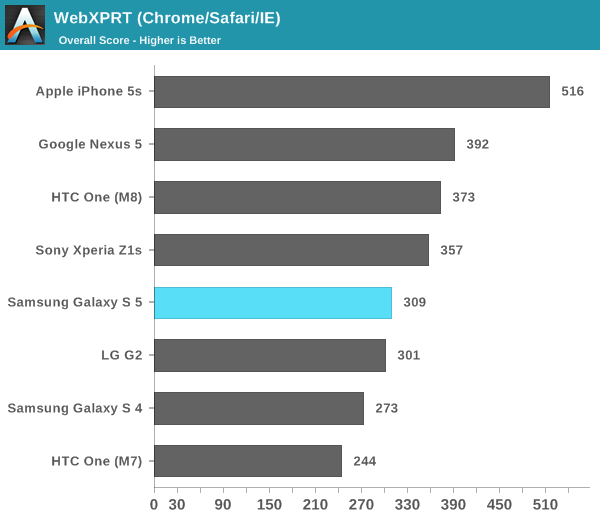
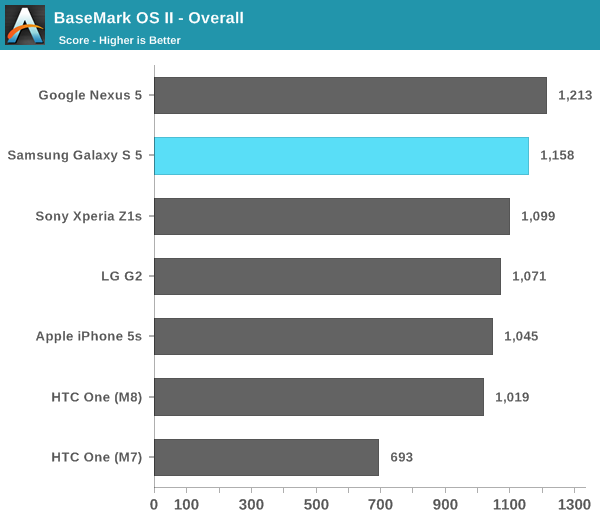
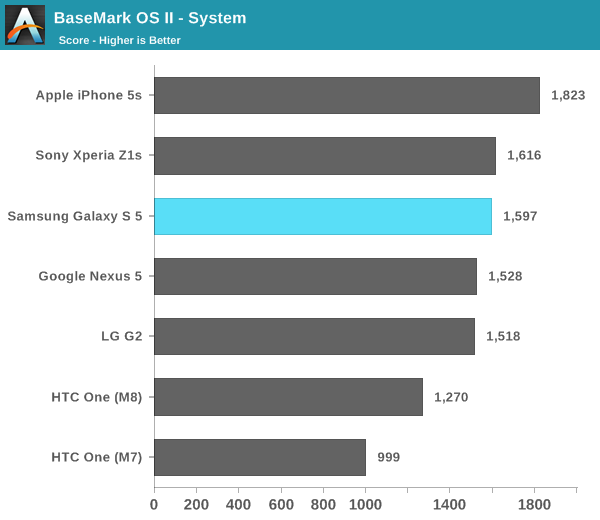
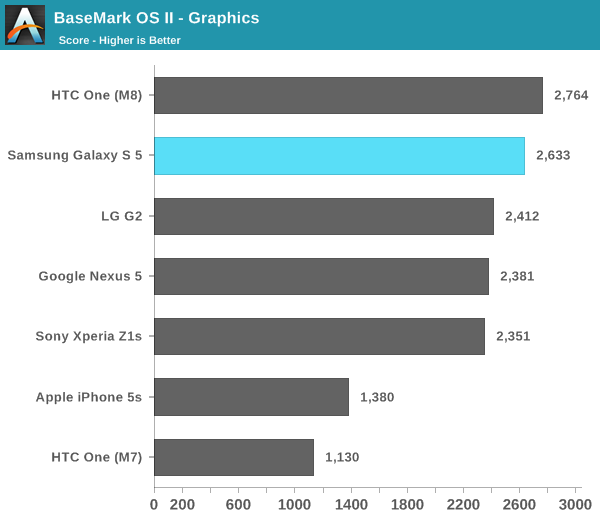

GPU Performance
GPU performance remains where we see the biggest benefit from Snapdragon 801 vs. 800, and since the GPU gains are almost entirely due to frequency scaling it's not too surprising that the M8 pulls ahead of the GS5 here in most cases.
There aren't any surprises here. The Adreno 330 in the Galaxy S 5 is more than capable of driving the device's 1080p display both in current and near term future 3D games.
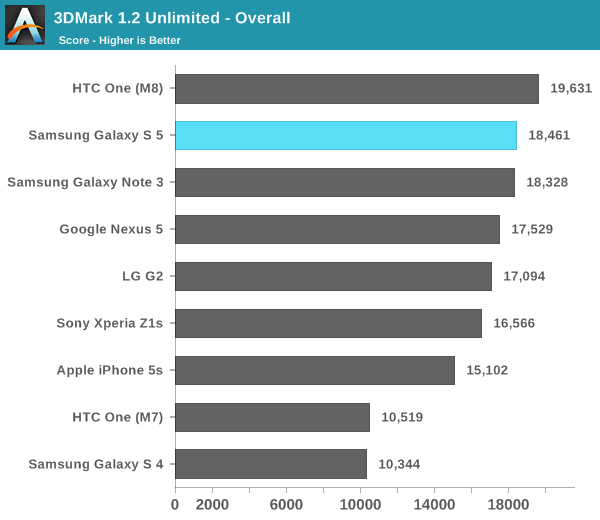
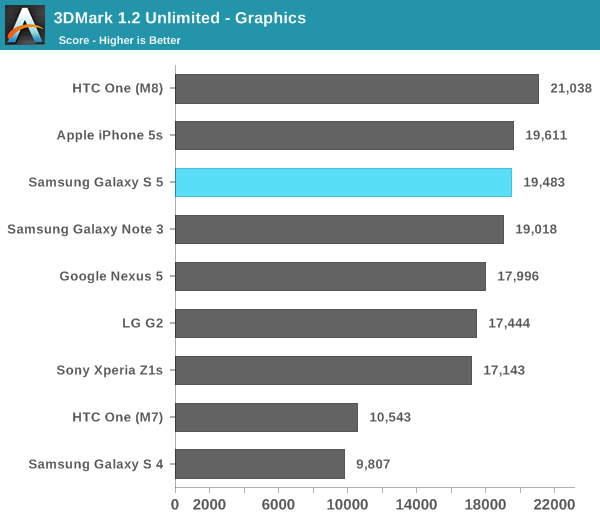
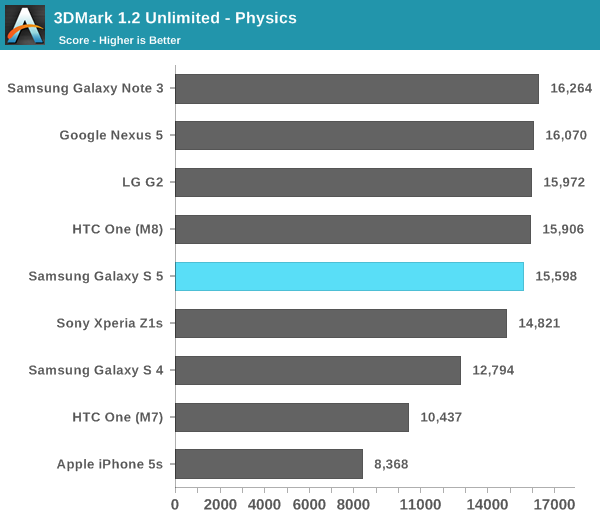
BaseMark X 1.1
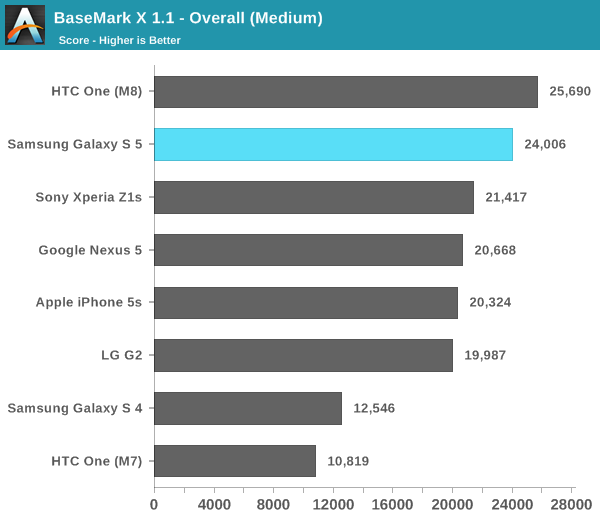

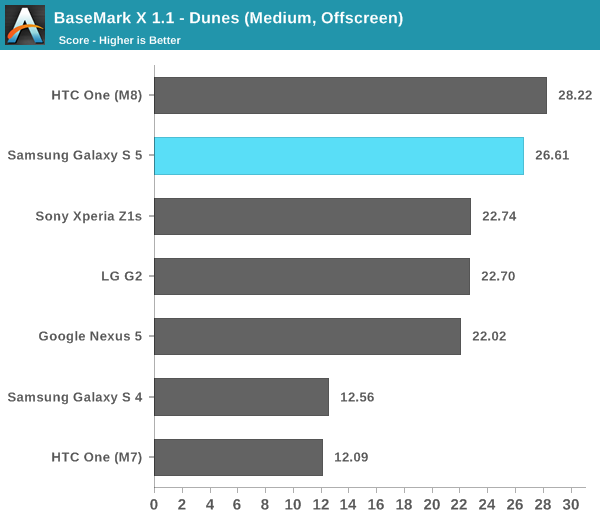
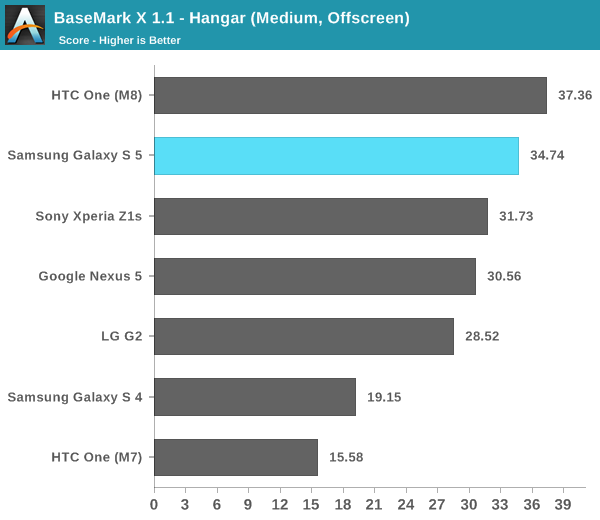

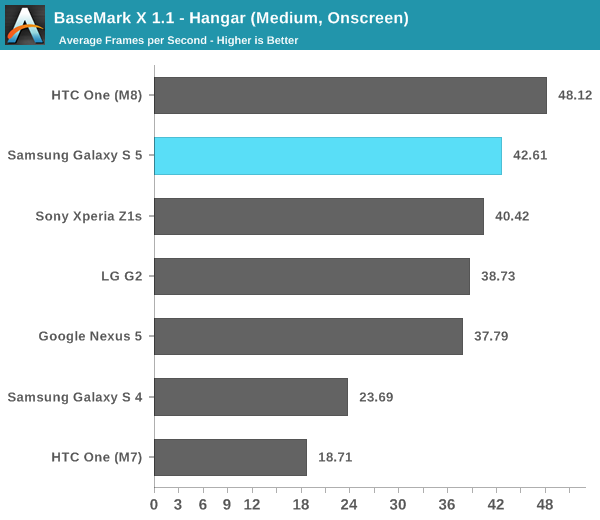
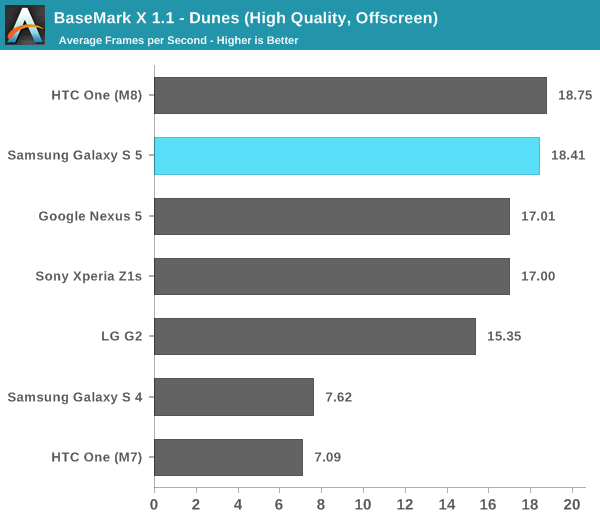
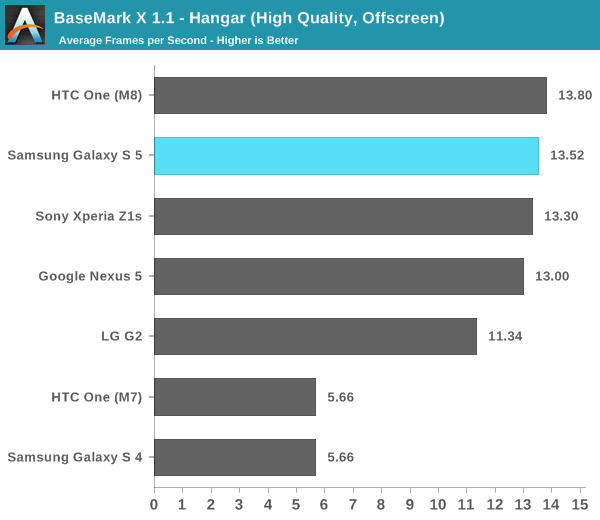
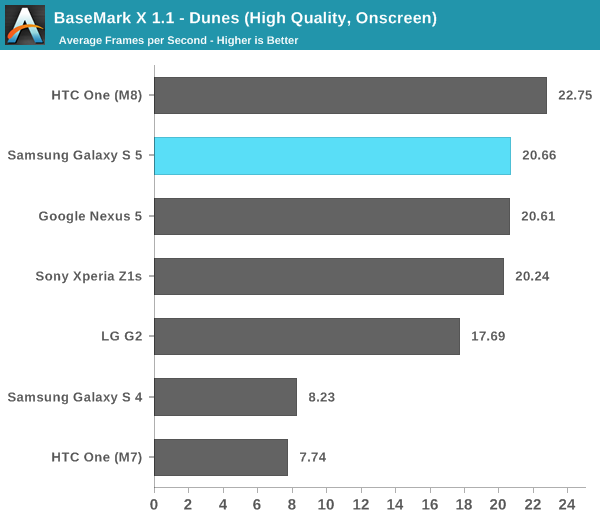
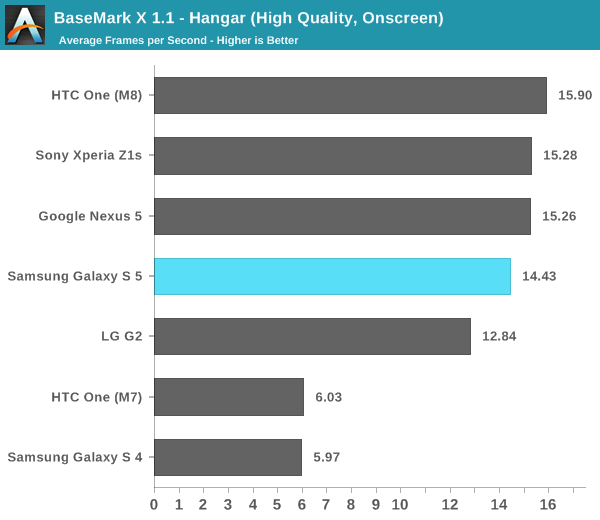
GFXBench 3.0
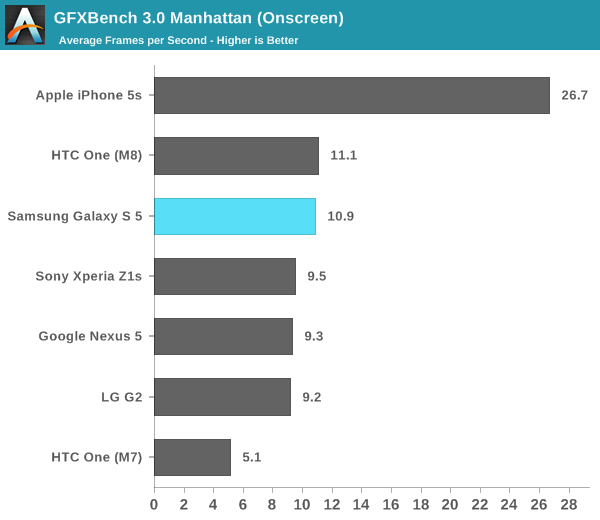
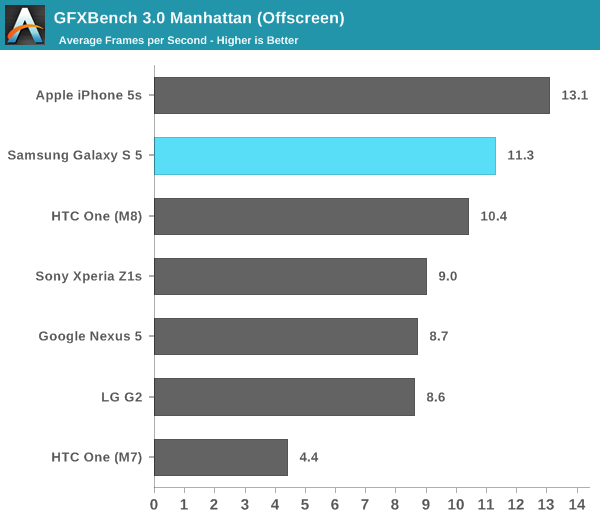
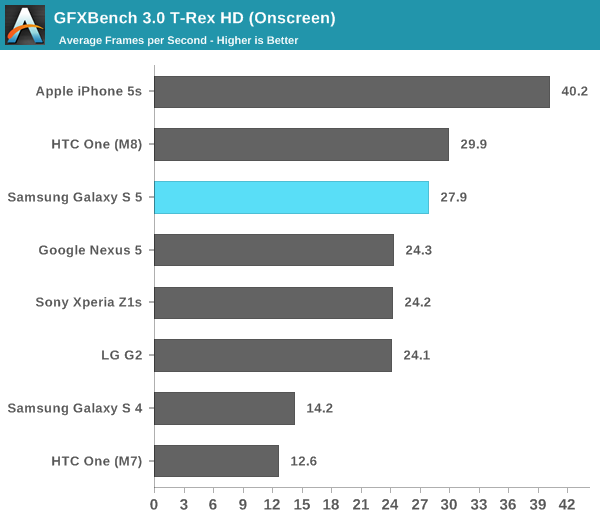
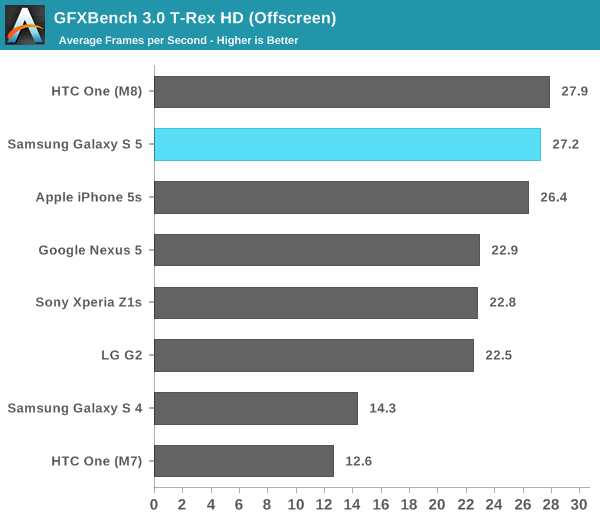

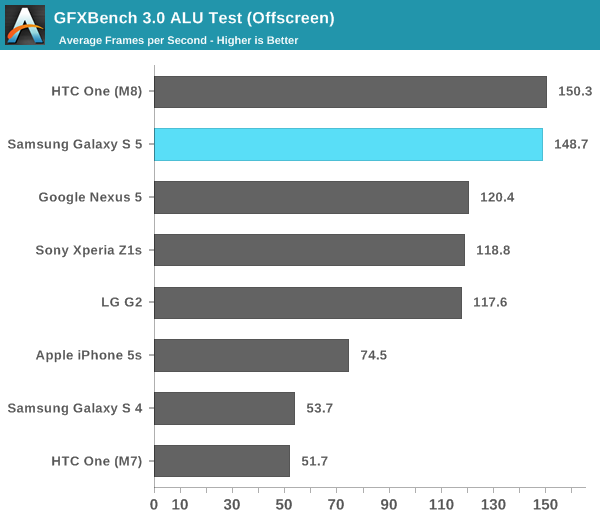


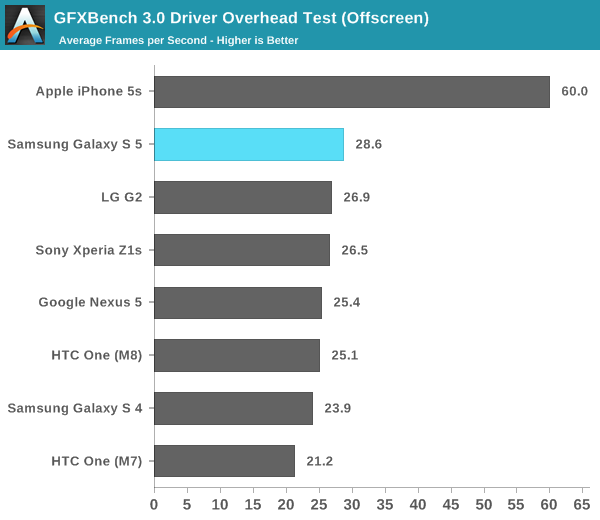
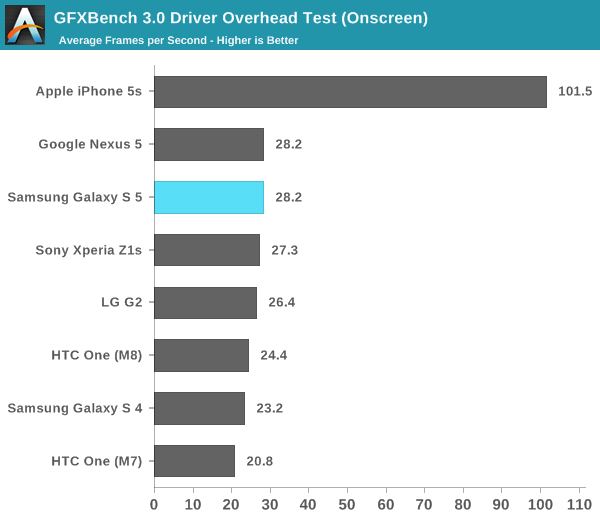
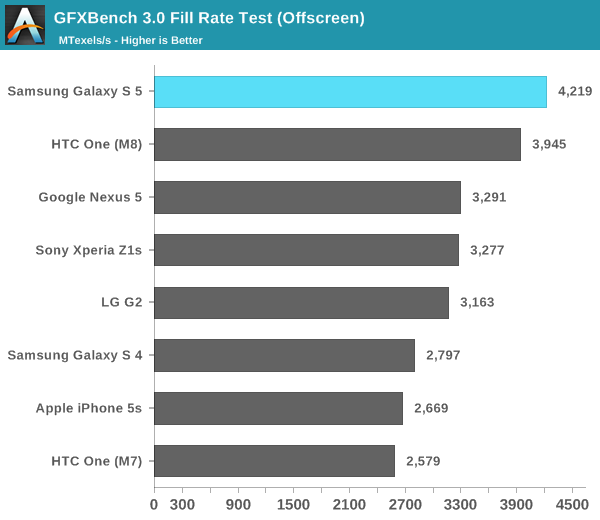
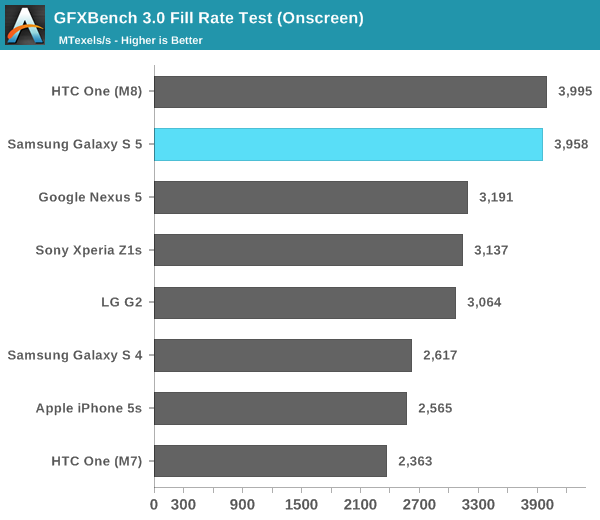
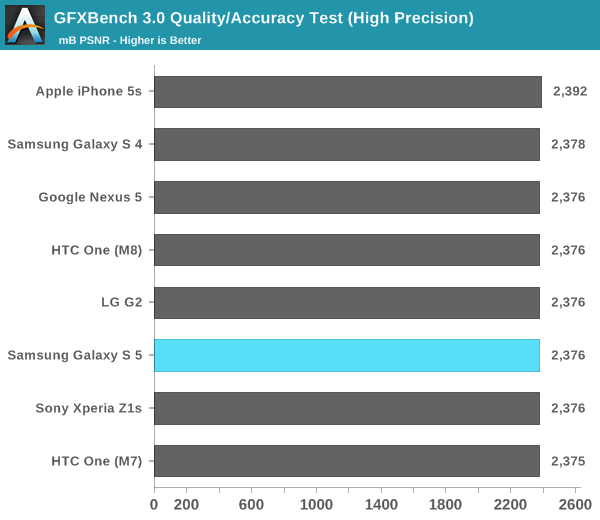
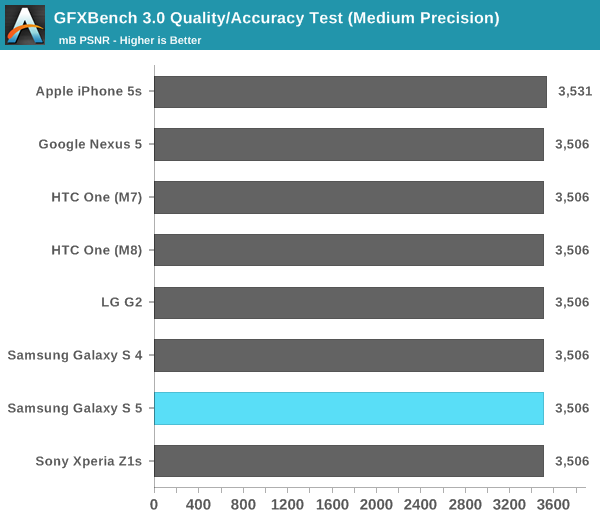
NAND Performance
The GS5 ships with 16GB or 32GB of NAND internally on an integrated eMMC device. Expansion is supported through a microSD card slot behind the removable back cover. Although the Snapdragon 801 inside supports eMMC 5.0, that alone doesn't guarantee a substantial increase in NAND performance. Keep in mind that most OEMs find multiple sources for their internal eMMC/NAND solutions, so what I'm testing here may only be representative of a portion of all GS5 devices.
Samsung sampled a 16GB GS5 review device. I put it through our usual random/sequential IO tests on a 100MB span of LBAs.
Random read performance is disappointing, it falls behind all modern devices we've tested. Random write performance is middle-of-the-road at best. It's unclear to me if this is a cost optimization or a lack of concern for NAND performance, but either way I'd rather see these metrics improve rather than regress.
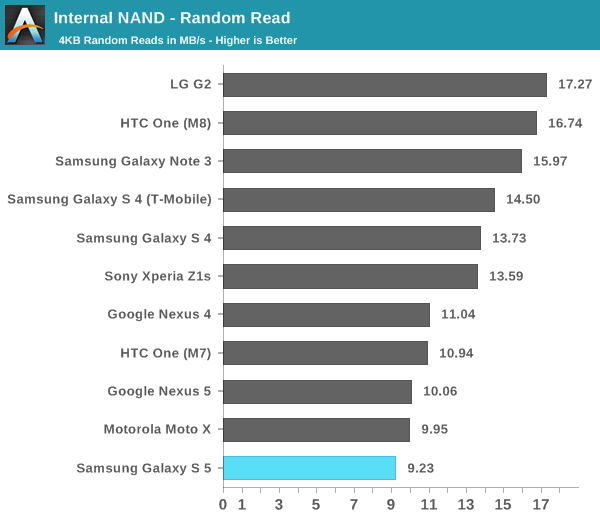
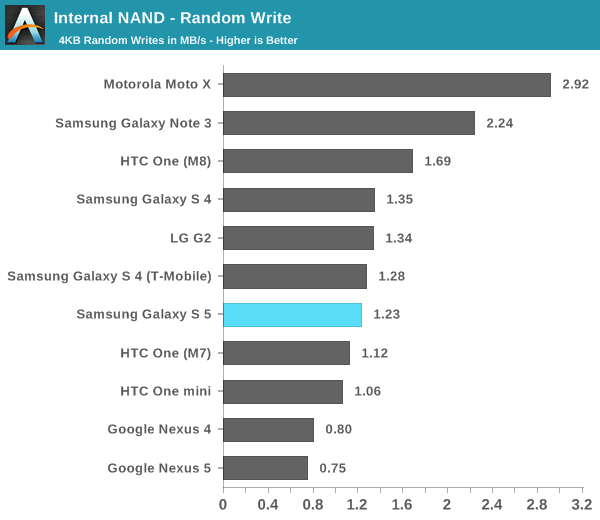
Sequential read/write performance both improve handsomely compared to the Galaxy S 4. I can see why Samsung would want to optimize for these two cases as they are quite common in regular usage, but random read/write performance can also significantly impact user experience.
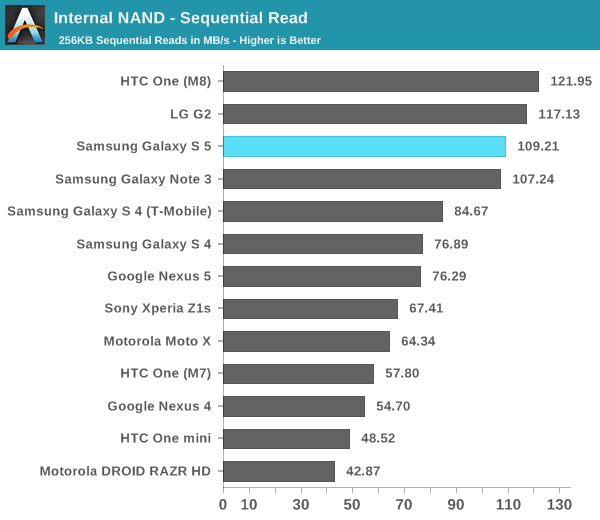
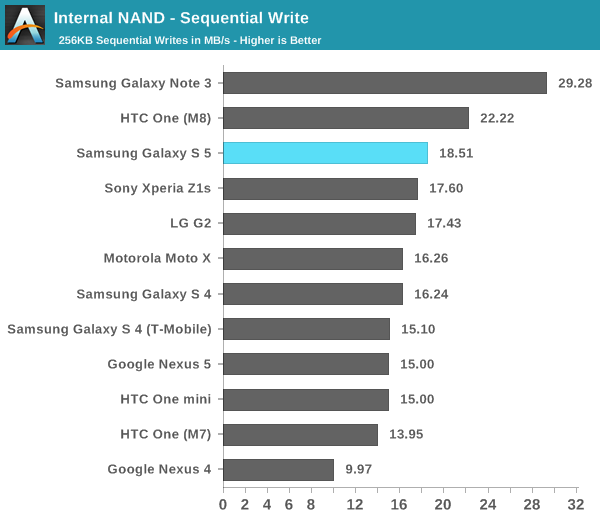










296 Comments
View All Comments
darwinosx - Tuesday, April 8, 2014 - link
Huh? No weak points? The lousy camera, speakerphone and build quality?LakerHater - Wednesday, April 9, 2014 - link
I disagree, the LG G2 is the same as the Nexus or even better in some areas (camera, battery). Plus, I can always switch to the Google Now Launcher if I want stock android look.goobersnatcher - Thursday, April 10, 2014 - link
Great phone ....by the way. Can get it for a little over $400.00. The G2 can do it all! :)nos024 - Thursday, April 10, 2014 - link
Wow...you just called out all the apple users out there basically.max1001 - Thursday, April 10, 2014 - link
So you are telling me you judge an ui lag base on 23 fps youtube video? That's like measuring a rocket speed using a radar gun that max out at 60 mph. .pjcamp - Friday, July 4, 2014 - link
I made one change to my Galaxy S3. I replaced the stock ROM with Cyanogenmod 11. Stuttering and crashes went away. Agreed -- Touchwiz is the weak point for Samsung and always has been.sabot00 - Tuesday, April 8, 2014 - link
Rather unfortunate to see very incremental changes lately. Both the new HTC One and the GS5 are small evolutions.BedfordTim - Tuesday, April 8, 2014 - link
Agreed, but as xsoft7 has pointed out Samsung has a way of making the change seem bigger than it is.Personally I would have liked to see the power button moved so you don't press it when you pick up the phone.
hlovatt - Tuesday, April 8, 2014 - link
Disappointing upgrade, the Galaxy Ho Hum :)Netscorer - Tuesday, April 8, 2014 - link
Just wondering - what did Samsung missed out in your opinion? I thought their battery life is phenomenal, camera is improved, new features (finger scan, heart rate, etc.) are evident. To me the only lacking feature is absence of Qi wireless charging out of the box. Other then that they have a very appealing phone.